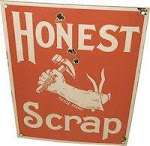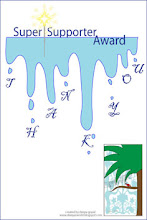When I first read this, I was like..what's this? But when I got to the end, it all got better. I think it's pretty funny, but if you don't read it till the end..it won't make any sense, so make sure you read the WHOLE story. Don't stop if it gets too disgusting, 'cuz you'll have a great laugh and SURPRISE after you're done reading it. And make sure you forward this to all your friends. Male AND Female!! A GIRL'S FIRST TIME!!! (Assume you are a girl if you are a boy). It's your first time. As you lie back your muscles tighten. You put him off for a while searching for an excuse, but he refuses to be swayed as he approaches you. He asks if you're afraid and you shake your head bravely. He has had more experience, but it's the first time his finger has found the right place. He probes deeply and you shiver; your body tenses; but he's gentle like he promised he'd be. He looks deeply within your eyes and tells you to trust him - he's done this many times before. His cool smile relaxes you and you open wider to give him more room for an easy entry. You begin to plead and beg him to hurry, but he slowly takes his time, wanting to cause you as little pain as possible. As he presses closer,going deeper, you feel the tissue give way; pain surges throughout your body and you feel the slight trickle of blood as he continues. He looks at you concerned and asks you if it's too painful. Your eyes are filled with tears but you shake your head and nod for him to go on. He begins going in and out with skill but you are now too numb to feel him within you. After a few moments, you feel something bursting within you and he pulls it out of you, you lay panting, glad to have it over. He looks at you and smiling warmly, tells you, with a chuckle; that you have been his most stubborn yet most rewarding experience. You smile and thank YOUR DENTIST. After all, it was your first time to have a tooth pulled. Naughty, Naughty! What were you thinkin'? I know what you were thinking.....
Tuesday, February 26, 2008
INFORMATION FOR TOURISTS
HISTORY - ANDAMAN & NICOBAR ISLANDS
 Floating in splendid isolation, east of the Indian mainland is the archipelago of 572 emerald islands, islets and rocks known as Andaman & Nicobar Islands. This Union Territory is stretched over an area of more than 700 Km. from north to south with 36 inhabited islands and is divided into two districts - Andaman to the North and Nicobar to the South. The two are separated by about 90 nautical miles of sea – The Ten degrees Channel. These islands are the continuation of the Arakan Yoma mountain range which extends from Myanmar upto Achin Head of Indonesia.
Floating in splendid isolation, east of the Indian mainland is the archipelago of 572 emerald islands, islets and rocks known as Andaman & Nicobar Islands. This Union Territory is stretched over an area of more than 700 Km. from north to south with 36 inhabited islands and is divided into two districts - Andaman to the North and Nicobar to the South. The two are separated by about 90 nautical miles of sea – The Ten degrees Channel. These islands are the continuation of the Arakan Yoma mountain range which extends from Myanmar upto Achin Head of Indonesia.
These undulating islands are covered with dense forests and endless variety of exotic flowers and birds. The topography of the islands is hilly and abounds in evergreen forests. The sandy beaches on the edge of meandering coastline are fringed with coconut-palms that sway to the rhythm of the sea. The sea around the islands offer excellent scope for water sports.
The rare flora and fauna, underwater marine life and corals, with crystal clear water and mangrove-lined creeks, offer a dream-view of the rare gifts of nature. The clean and wide roads, free of filth as well as unpolluted fresh air attract any nature-lover, who seek absolute peace and tranquility in the lap of nature. Adventure tourism like trekking, island camping, snorkeling, scuba diving etc. are the real attractions. A visit to these islands is a memorable lifetime experience. 
Mythologicaly, the name Andaman was presumed to be derived from Hanuman, who was known to the Malays as Handuman. The name Nicobar seems to be a corruption of the South Indian term ‘Nakkavaram’ (Land of the Naked) as indicated in the great Tanjore inscription of AD 1050.
Since Prehistoric times, these islands were the home of aboriginal tribes. The tribes of, the Andaman group of islands are the Great Andamanese, Onges, Jarawas, and Sentinatese, all of Negrito origin, while the tribes of Nicobars are the Nicobarese and Shompens, both of Mongoloid stock.
The first settlement by the British took place in 1789, which was later abandoned in 1796. The second settlement was basically a penal settlement, taken up in 1858, after the First War of Independence, followed by the settlement of convicts, Moplas, some criminal tribes from Central and United Provinces, refugees from erstwhile East Pakistan, Burma and Sri Lanka as well as ex-servicemen.
THE SOCIAL MAKE UP
In these islands people of all faiths - Hindus, Muslims, Christians, Sikhs etc., and of all languages like Hindi, Bengali, Malayalam, Tamil, Telugu, Punjabi, Nicobari etc., live together in complete peace and harmony. Inter-religion and inter-regional marriages are common. This amazing racial and cultural mix is correctly described as Mini-India.Forests are the green extend over gold of the islands. The reserved and protected forests extend over 86% area of the territory and the forest cover is more than 92%. About 50% of the forests have been set aside as Tribal Reserves, National Parks and Wildlife Sanctuaries, which are inviolate.
 Luxuriant Mangroves perhaps the richest in the world, occupy nearly II.5% of the territory. More than 150 plant and animals species are endemic in nature. Mahatma Gandhi Marine National Park is rich in corals, varieties of colored fishes, sea turtles etc., besides other marine life. It is a birds paradise - more than 271 varieties of birds inhabit the idyllic landscape, out of which 39 are endemic. Megapode, Swiftlet, Hornbill and Nicobar Pigeon are some of the specialties of the Andaman & Nicobar Islands.
Luxuriant Mangroves perhaps the richest in the world, occupy nearly II.5% of the territory. More than 150 plant and animals species are endemic in nature. Mahatma Gandhi Marine National Park is rich in corals, varieties of colored fishes, sea turtles etc., besides other marine life. It is a birds paradise - more than 271 varieties of birds inhabit the idyllic landscape, out of which 39 are endemic. Megapode, Swiftlet, Hornbill and Nicobar Pigeon are some of the specialties of the Andaman & Nicobar Islands. The Andaman and Nicobar archipelago comprising of 572 Islands, islets and rocks, float in the clear blue waters of the Bay of Bengal, 700 nautical miles off the South Eastern coast of India. Andamans are the weather window to the Indian Peninsula as majority of the systems which affect the Mainland have their origin in the Andaman Sea. The Isles experience a tropical monsoon climate. Temperature is moderate and relative humidity is high. With both North-East & South-West monsoons being received, it rains for about eight months a year. December to March season of relatively Fair weather with winds generally E/NEly accompanied by occasional showers.
The Chinese knew of these Islands over a thousand years ago and called it the ‘Yeng-t-omag’ in the First Millenium. also find a place in the first map of the world drawn by Ptolemy, the renowned Roman geographer during the second century. He called it ‘Angdaman islands (Islands of good fortune). During the sixth century I’T Sing, a Buddhistmonk, named it ‘Lo-jen – kuo’ (Land of the Naked). Two Arab travelers during the eighth century referred to these islands as ‘Lakhabalus or Najabulus ‘(Land of the Naked). The great traveller Marco Polo called it ‘Angamanian’.
 Modern history of Andaman Islands can be traced back to 1789 when the Governor General of British India commissioned a survey of these Islands by Lt Archibald Blair, who conducted the first ever topo cum hydrographical survey and reported suitability for human settlement.
Modern history of Andaman Islands can be traced back to 1789 when the Governor General of British India commissioned a survey of these Islands by Lt Archibald Blair, who conducted the first ever topo cum hydrographical survey and reported suitability for human settlement.Immediately thereafter, in 1790 the first settlement was established at Port Blair (then Port Cornwallis) in the present day Chatham Island by bringing hard core criminals from undivided India. However, high mortality due to malaria and frequent attacks by aborigines forced the settlement to be shifted to a new port in North Andaman during 1792. Faced with similar problems, the new settlement was also abandoned in 1796.
The missionaries entered Nicobar group of Islands in 17th century. In 1756 the Dutch colonised Nancowry group of Islands and stayed there up to 1787. After several unsuccessful attempts to build up a colony in Nancowry, the Dutch Government ultimately handed over Nicobar group of Islands to the British, who took possession in 1869.
PENAL SETTLEMENT
It was in 1857, after India’s First War of Independence, that a penal colony was attempted at Port Blair with an initial lot of 200 freedom fighters who, for the first time, attempted to overthrow British rule in India. The number of freedom fighters increased to 773 within three months.The famous “Battle of Aberdeen” between civilized men and Stone Age aborigines of Andamans was fought on 14th May 1859 at Aberdeen Bazaar.
During 1869 – 70 many Wahabi Movement activists who rose against the British rule were deported from the Central and United Provinces of undivided India to Andaman. One amongst them was Mohd. Sher Ali Khan (a Pathan),who assassinated Lord Mayo, the Viceroy and Governor General of India on 08 February 1872 at Hope Town Jetty (now called Panighat). Later,in the same year, Sher Ali Khan was executed in Viper Island by the British. On 13 September 1893, the British Government of India, ordered the construction of a cellular jail to accommodate 600 prisoners.
Prior to construction of the Cellular Jail, male convicts were held in a jail on Viper Island and women convicts in South point barracks (near the present day hotel Sinclair).
Then occurred the great uprising of moplahs, the Moplah Rebellion during 1921. About 1400 Moplahs mosly from Muslim dominated districts of Ernad, Walluvanad and Calicut of Kerala were sent to Andamans with their families for rebelling against the British rule. Then came Rampa Revolution during 1922 – 24. As a result, many Rampa revolutionaries were also sent to Andamans.
JAPANESE RULE
During the 2nd World War the British hastily evacuated and abandoned these Islands in the face of advancing Japanese Forces, allowing Japanese occupation of Andaman and Nicobar Islands. The Japanese brutally ruled the territory for four years from 1942 to 1945. During this period, Japanese took up massive fortification on these islands through construction of airfields (Port Blair, Rutland, Car Nicobar), installation of Radars and guns for air defence network, chain of foreshore concrete pill boxes, underground ammunition dumps with trolley lines connecting some of them to Port Blair airport and elaborate underground bunkers for the troops. The remains of pill boxes, radars and anti aircraft guns are still visible at some places.
Port Blair harbour was extensively used as a forward surveillance base for sea planes of the advancing Japanese forces. A few months after the Japanese occupation, allied forces succeeded in blocking sealanes threatening island population to the brink of starvation. Japanese successfully averted the disaster through enforced intensive community of farming of tubers like tapioca and sweet potato. Extensive road network expansion was also undertaken at that time for connecting Port Blair with outlying villages and cultivating land.
On the morning of 7th October 1945,the Armada carrying 116 Indian infantry brigade of South East Asian allied Land force under the command of Brigadier A.J. Solomon surrounded Port Blair Compelling about 20,000 armed Japanese force to surrender on 9th October 1945.
EVENTUALLY, With the advent of Indian Independence on 15th August 1947, these islands were merged with the Indian main stream.



































